

|
Equinox Project | Monday, March 2, 2009 Though I'd built an engine template many weeks ago, past experience with Beta engines indicated that it would be prudent to await the engine's physical delivery to confirm the manufacturer's measured drawings before committing to constructing engine beds based on those drawings. So with the engine a bit behind schedule, I was anxious today to begin the process of building new foundations and installing the engine. First, I confirmed that the engine's mounting centers were as indicated on the drawing--and therefore on my template. Next, I installed a taut string through the engine compartment, leading directly through the center of the stern tube to represent the centerline of the propeller shaft. To help align the string through the stern tube, I made small wooden plugs with a hole saw that fit tightly in the ends of the tube, with the string running through the small center hole. This made it straightforward to align the string by eye. I secured the forward end of the string to some scrap that I clamped in place between some structural members, and adjusted things till I was satisfied with the string's position. |
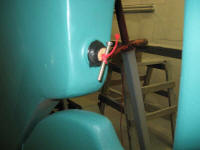
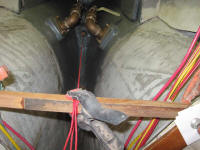
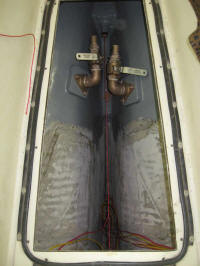 
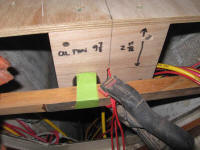
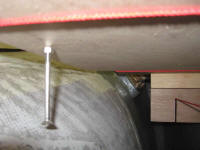 |
|
After a quick test-fit of the template complete with my flexible engine mount stand-ins (long bolts protruding beneath the platform to correspond with the mid-adjusted depth of the flexible engine mounts), which confirmed my initial worry that the after mounts would run into clearance issues with the curvature of the hull, I removed the fake mounts from my template and, using several lines tied to the template, hung the template from the edges of the hatch opening, adjusting and fiddling with the lines till at length I had the thing more or less properly positioned and centered over my string. The marionette work with the strings served a single purpose: aligning the template temporarily so that I could then build some wooden hangers on which to support the template during further steps. From scrap pine, I built two different support arrangements, abandoning the first attempt when I realized it wasn't accomplishing what I needed it to. With a bit of extra width to allow lateral adjustment of the template over the centerline, my second set of supports worked adequately, and I clamped the vertical pieces to nearby structure and adjusted their heights till the centerline string passed directly through the two center holes drilled in my template. |
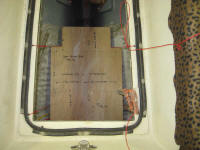
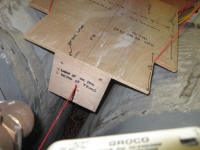
 |
|
Satisfied with the template's position, and now with fixed wooden hangers in place with which to easily reposition it, I used a straightedge to transfer the height of the template around to the adjacent hull at the aft end, and made additional reference marks 1-1/2" above (using the thickness of the straightedge) which would come in handy for determining elevations or other measurements later. At this point, I also stopped and checked the overall level of the boat; it was off a bit from side-to-side since I'd released most of the jackstands earlier for bottom paint, so I took a few minutes to correct the transverse level and check the athwartships levelness of the template. Then, I removed the template and installed the two forward flex mounts. Then, I put the template back in the boat to see how these forward mounts fit against the hull, and to give me an idea how and where I'd build new structure to support them. For the after flex mounts, which wouldn't begin to clear the curvature of the hull, I'd have to have some custom fixed mounts made to replace the stock mounts, which would allow the flex mounts to be located further up and to the sides of the engine where there was room. I ordered some rat materials for the new foundations, and that was all I could do on the engine installation for now. |
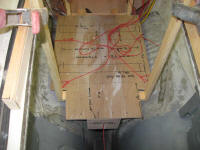
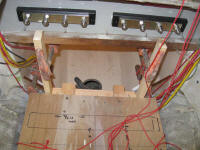
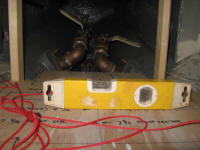 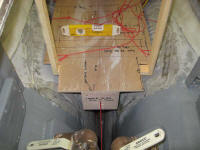

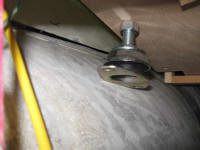 |
|
To finish up the day, I temporarily installed one of the electric panels in its wooden backer so that I could lay out a hole for a 12V outlet. After protecting the area with tape and determining the proper location, I bored a hole in the drill press and installed the outlet. |
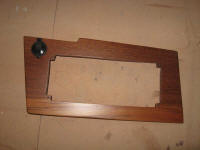 |
|
Finally, I sanded and revarnished the exterior side of the swashboards, bringing the total to 3 or 4 coats (for build purposes, I assumed three, but it might be more). |
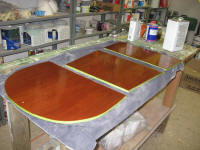 |
|